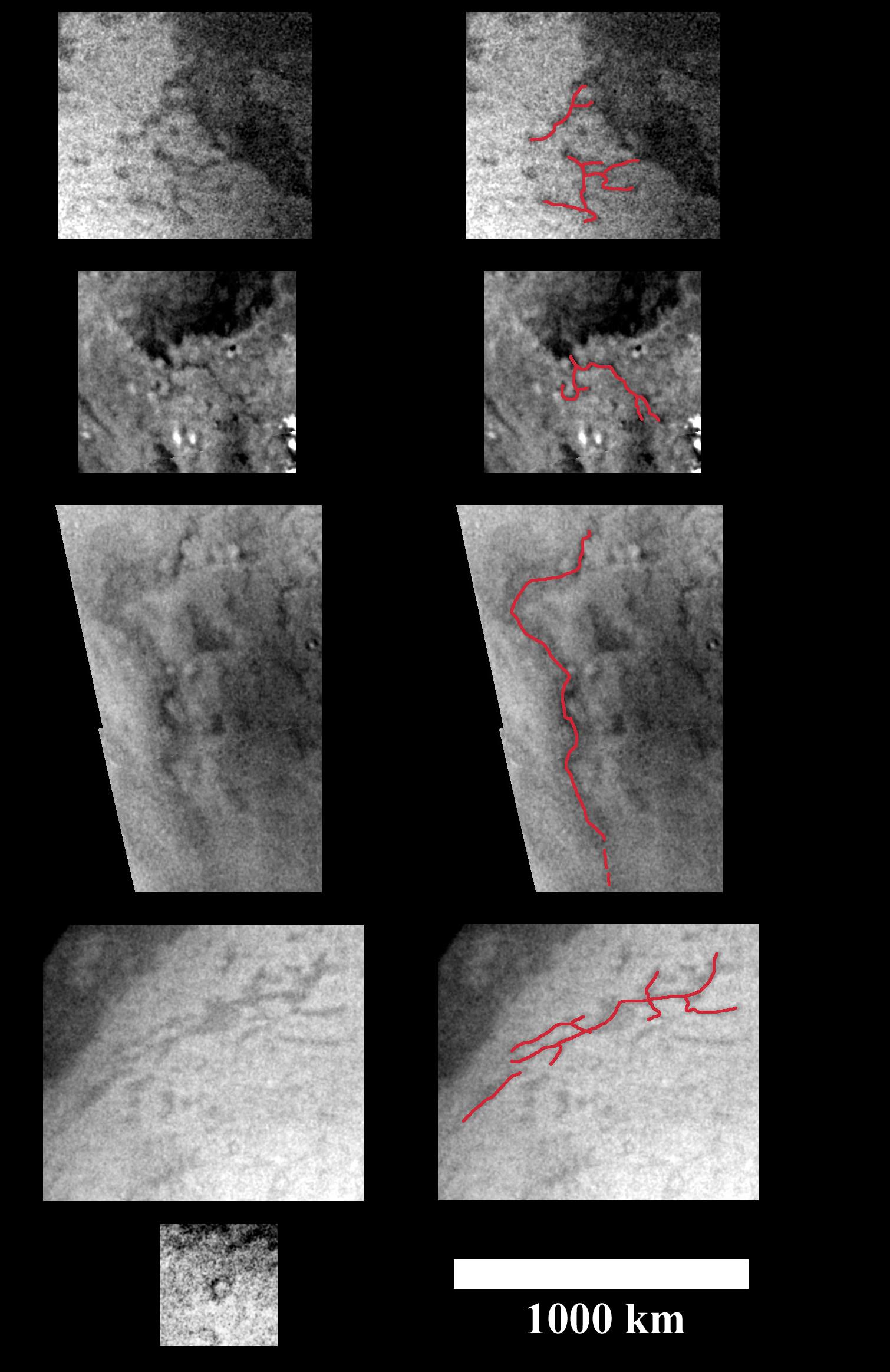Tracing Surface Features on Titan — Close-Ups

| PIA Number | PIA06202 |
|---|---|
| Language |
|
These images of Titan's south polar region were acquired during Cassini's first distant encounter with the smog-enshrouded moon on July 2, 2004. The spacecraft approached Titan at a distance of about 340,000 kilometers (211,000 miles) during this flyby.
This montage contains pairs of close-up images, with the original images (at left) and also versions in which some of the narrow, dark, curvilinear and rectilinear surface features have been traced by red lines (at right). These dark features may be examples of surface channels and deeper crustal structures such as faults. The longest features (in the third and fourth pairs from the top) extend for as much as 1,500 kilometers (930 miles) across the surface and are as narrow as 10 kilometers (6 miles) across. At the bottom left, a single frame shows a small, dark, circular feature, which could be an impact crater. For reference, the white bar at the bottom right is a 1,000-kilometers-long (620 mile) scale bar.
A large mosaic of this region and the source of the images in this montage is also available (see Tracing Surface Features on Titan -- Mosaic).
The Cassini-Huygens mission is a cooperative project of NASA, the European Space Agency and the Italian Space Agency. The Jet Propulsion Laboratory, a division of the California Institute of Technology in Pasadena, manages the mission for NASA's Science Mission Directorate, Washington, D.C. The Cassini orbiter and its two onboard cameras were designed, developed and assembled at JPL. The imaging team is based at the Space Science Institute, Boulder, Colo.
For more information about the Cassini-Huygens mission visit http://saturn.jpl.nasa.gov . For additional images visit the Cassini imaging team homepage http://ciclops.org .
Credit: NASA/JPL/Space Science Institute
